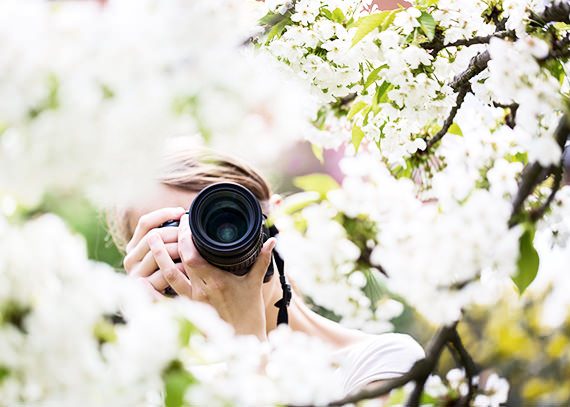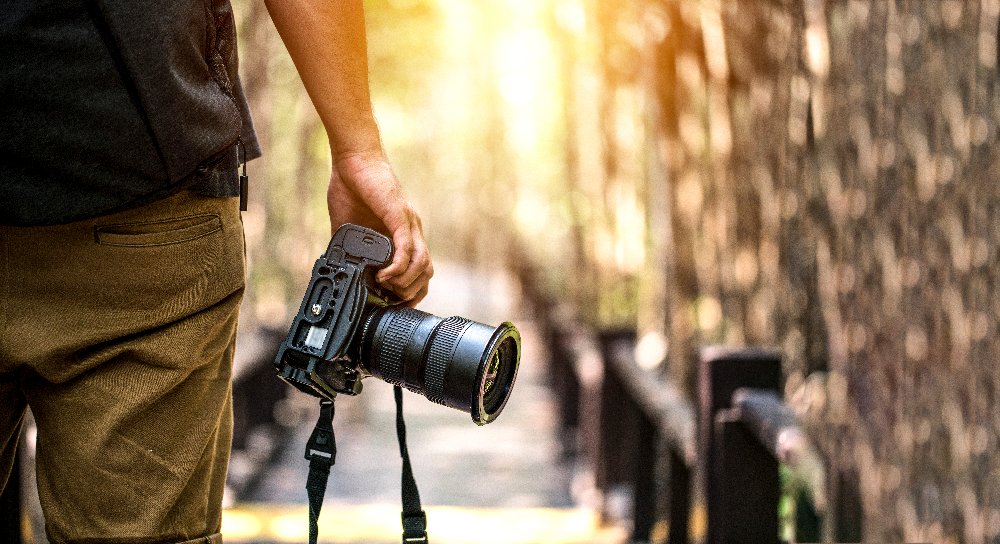
All You Need to About Digital Photography
A Compact Glossary on Digital Photography – The 20 Most Important Questions
In the world of photography, and especially digital photography, terms are sometimes used that can puzzle even the professionals. Learn the technical jargon and some practical application tips. Here we will introduce you to the 20 most important terms in digital photography from exposure bracketing to zoom.
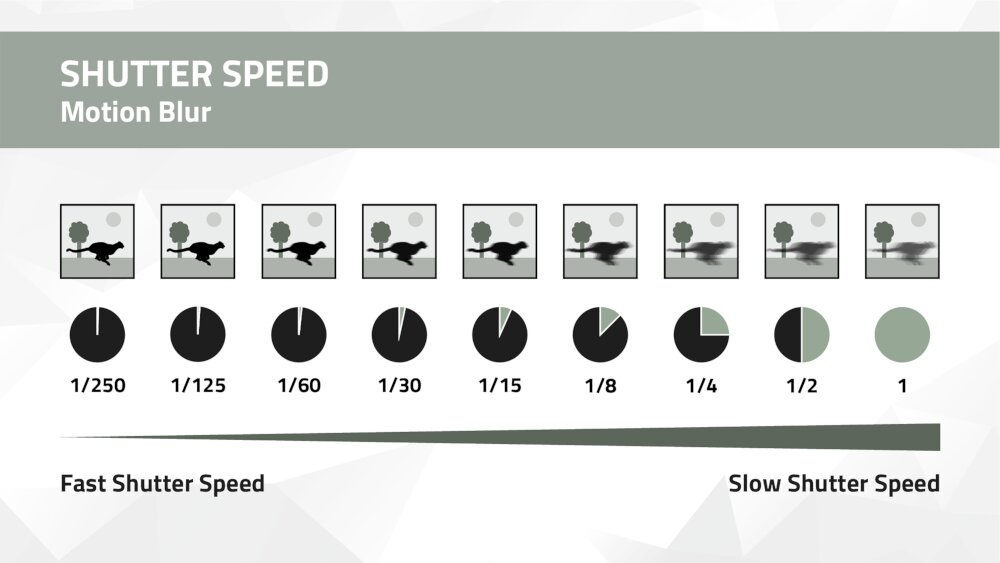
1. What is exposure bracketing?
In order to create an exposure bracketing, an odd number of photos – usually 3, 5, or 7 – are taken from the exact same position with various exposure settings. The resulting photos with various aperture, exposure time, and ISO settings will then be compared to one another in order to end up with an optimally exposed result.
The goal of this technique is to end up with a photo that is neither under- nor overexposed even on days or during times of day when the lighting conditions are less than optimal.
2. How long should the exposure time be?
The exposure time, also known as shutter speed, along with the aperture and ISO value, is one of the three fundamental parameters that affect the exposure of a photo (PDF only available in German). As the term already suggests, the exposure time affects how long the shutter of the camera remains open after pressing the shutter release to allow light to hit the sensor.
Short exposure times are best suited for taking sharp photos of moving motifs, such as in sports photography. If a movement is captured with a very short exposure time, the term “freezing movement” is used.
A dynamic photo is a picture that intentionally employs motion blur for stylistic effect. A simple example of this is a flowing waterfall being photographed with a long exposure time to make it appear soft and misty.
Tip
In general, a not-too-skilled photographer can use an exposure time as long as 1/60 of a second and hold the camera in their hands without camera shake. For taking photos with longer exposure times, it’s necessary to use a tripod.
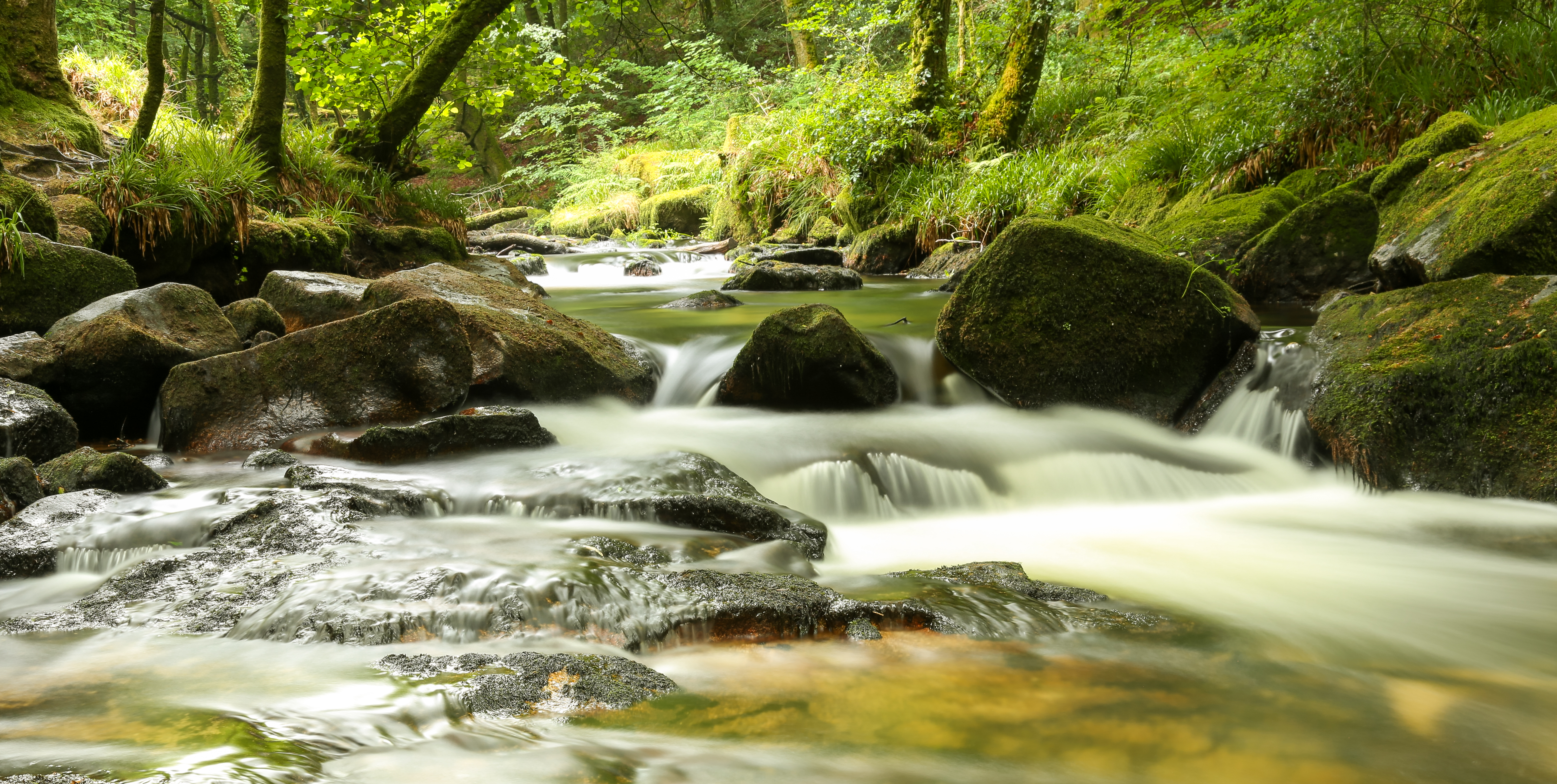
3. What is image resolution?
Resolution isn’t only important when printing photos. Image resolution describes the detail fidelity of the camera, which is characterised by the number of image elements (pixels) used. Depending on the given application, image resolution is depicted as the number of image elements (pixels), dots per inch (dpi), or dots per centimetre (dpcm).
In digital photography, the term pixel is typically used. For printed images, on the other hand, the dpi value is especially crucial.
Tip
In order to end up with a good print result in 20cm format, the resolution should be at least 2400x3600 pixels, i.e. 10 MP.
4. What determines the image quality of photos?
Factors such as colour rendering, contrast, focus, and detail reproduction all contribute to the image quality of a photo.
These factors are heavily influenced by the image quality of the lens, the camera sensor, and the effectiveness of the image processing. Thus, good image quality results from the optimal combination of these components and is strongly influenced by the quality of your camera.
5. What is an image stabiliser?
An image stabiliser reduces blurriness during freehand photography. It’s important to keep in mind, however, that this only compensates for movements made by the photographer and not for movements of the motif.
Here, a distinction is made between optical, mechanical, and digital stabilisers. Optical image stabilisers contain movable mounted lenses. Sensor-shift image stabilisation, on the other hand, is mechanical and occurs through the electromagnetic movement of the sensor. The mobility of either the lenses or sensor can compensate small movements made by the photographer. This also enables the photographer to use longer exposure times.
Digital image stabilisation is carried out through adjustments of the following exposure parameters: aperture, ISO, and exposure time. Here, the ISO value is usually raised considerably in order to keep the exposure time as short as possible.
Tip
Since too high of an ISO value can cause image noise, it’s not recommended to use digital image stabilisation.
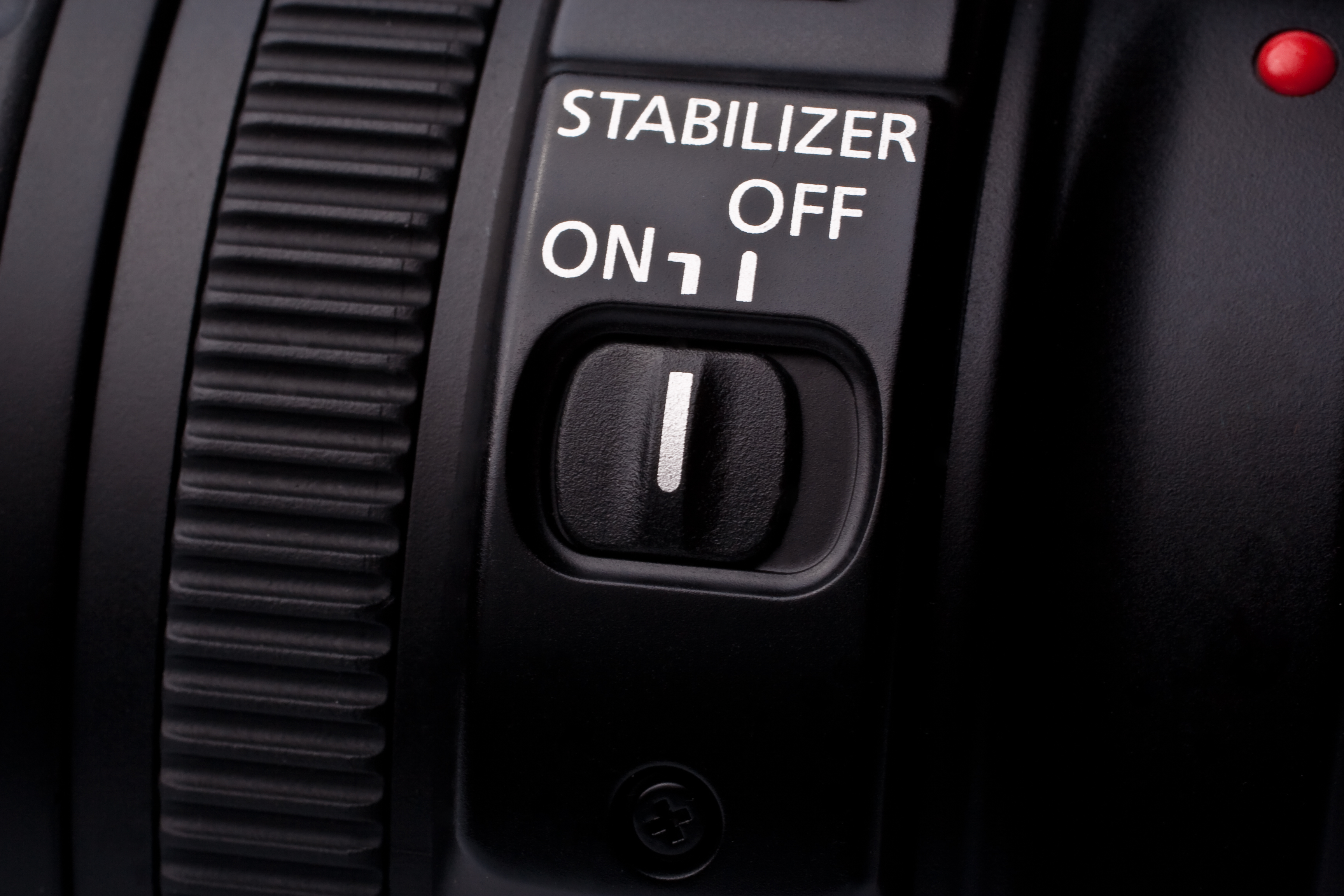
6. What does the aperture do?
The opening of the aperture regulates the amount of light that is allowed through to the camera’s sensor through the lens. When talking about the aperture opening, the term f-number (or f-stop) is usually used, which is usually displayed as a fraction. With a large f-number, such as f/4, the aperture is opened wide. With a smaller f-number, such as f/22, it’s barely opened.
It’s not uncommon to see an f-number displayed as just a whole number instead of a fraction. Be careful not to get confused here: when displayed as a whole number, a low f-number (4) means the aperture is opened wide and a high f-number (22) means the aperture is barely opened.
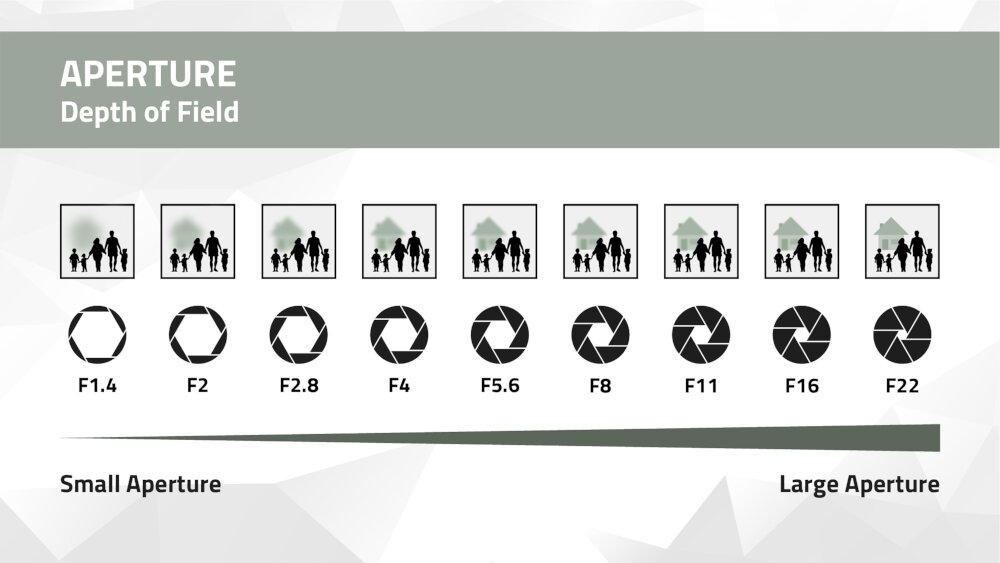
7. What determines the focal length of a camera?
The focal length of a lens is determined by the distance between the lens and imaging plane. The longer the focal length is with a sensor of the same size, the motif is more enlarged and the image angle is more reduced.
A “normal” camera lens has a focal length of 50 mm, since this is approximately equivalent to the angle of view of the human eye. Lenses with a focal length shorter than 50 mm are wide-angle and lenses with a focal length shorter than 20 mm are super wide-angle. Lenses with a focal length longer than 50 mm are categorised as telephoto lenses.
8. What is dynamic range?
In contrast to the human eye, a camera sensor has a limited dynamic range, which is why it can adapt to various ambient lighting conditions only to a certain extent.
Quick changes between bright and dark environments are particularly challenging for the sensor to handle.
The dynamic range describes the range between the darkest and brightest area of a motif and spans over a maximum of 23 f-stops. The human eye spans across approximately 20 f-stops while a modern high-quality camera only covers 9-12 of these f-stops.
Should the dynamic range of a camera be exceeded when photographing, the image information found outside the dynamic range will be lost. This leads to over- or underexposure. When this occurs, the term “burned” is often used.
9. What is Exif?
Exif stands for exchangeable image file format. When using Exif, additional image information is automatically added to the camera’s digital photos. Examples of this are the date the photo was taken, aperture, exposure time, camera type, or focal length.
10. What is colour balance?
Colour balance is the distribution of colours within an image and an image is only in balance when there is no colour cast visible. Thus, colour balance is only present when all colours are nearly uniformly saturated.
Counterexamples are, for instance, a red colour cast or green colour cast in the image.
11. What is colour depth?
Colour depth describes how many bits are utilised to depict each colour component of an individual pixel. If an image is saved with 8 bits, 256 different colours can be depicted. The term “bit” is a portmanteau from the field of informatics and is a unit of measure for digital data volumes. A 24-bit image can depict 16.7 million different colours. This very realistic colour depiction is also called “true colour.” Colour gradients appear to be especially more stepped the less colour depth an image has.
12. What is the “golden ratio”?
The golden ratio describes a particular division ratio of a section of the photographed motif. The proportions of the golden ratio appear especially aesthetic since it can be found in both nature as well as humans.
Here, a section is divided into two parts called “major” and “minor.” The major portion is 61.8% of the whole, and is thus the larger portion.
In everyday use, it’s not easy to perfectly divide a section according to the golden ratio, which is why a simplified ratio of 3:5 is often used.
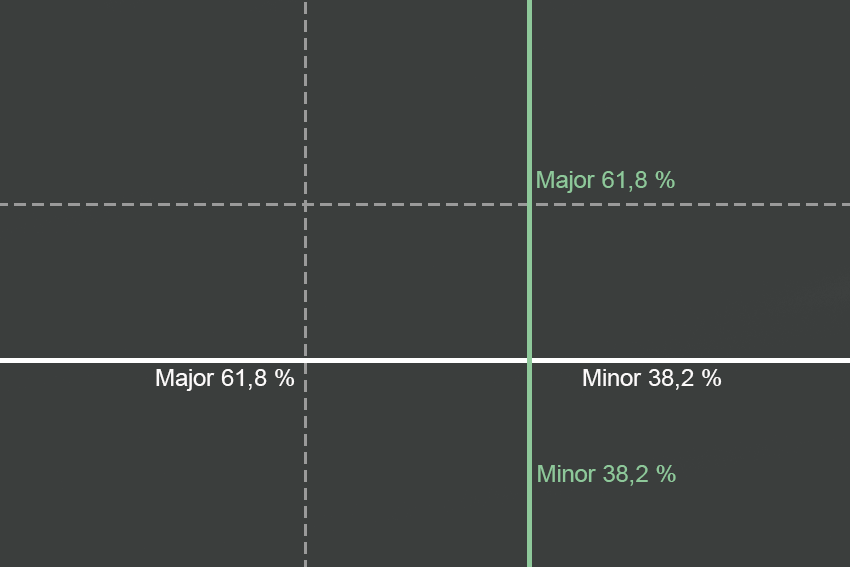
13. What does HDR stand for?
The acronym HDR stands for high dynamic range (see dynamic range). An HDR image produces a photo that is closer to the actual perception of the human eye than normal photographs.
There are various methods of producing such an image. There are special cameras available that have a higher dynamic range than conventional cameras. Since these cameras are very expensive, however, they are not used by hobby photographers.
Many modern cameras these days come with an HDR function, which generates an HDR image directly from several individual images. The image is generated from an exposure bracketing of at least three differently exposed images. Every section of the motif must be correctly exposed on at least one of these images in order to generate an HDR image.

14. What is the optimal ISO value?
The ISO value indicates the photosensitivity of a recording medium. In digital photography, the ISO value regulates the light sensitivity of the sensor and can be changed from photo to photo.
ISO values between 100 and 200 are considered standard. When the ISO value is doubled and thus the light sensitivity of the sensor increased, the exposure time is also conversely halved. When increasing the light sensitivity of the sensor, this not only makes the sensor more receptive to light, but also to interference – so-called “image noise” can appear.
Tip
An ISO value between 400 and 800 is normally no problem to use in cloudy weather. When photographing at night, ISO values over 800 are also common. After raising the ISO value, however, you should take a close look at the first couple of photos on your display in order to be sure that no image noise appears later when editing photos on your computer.
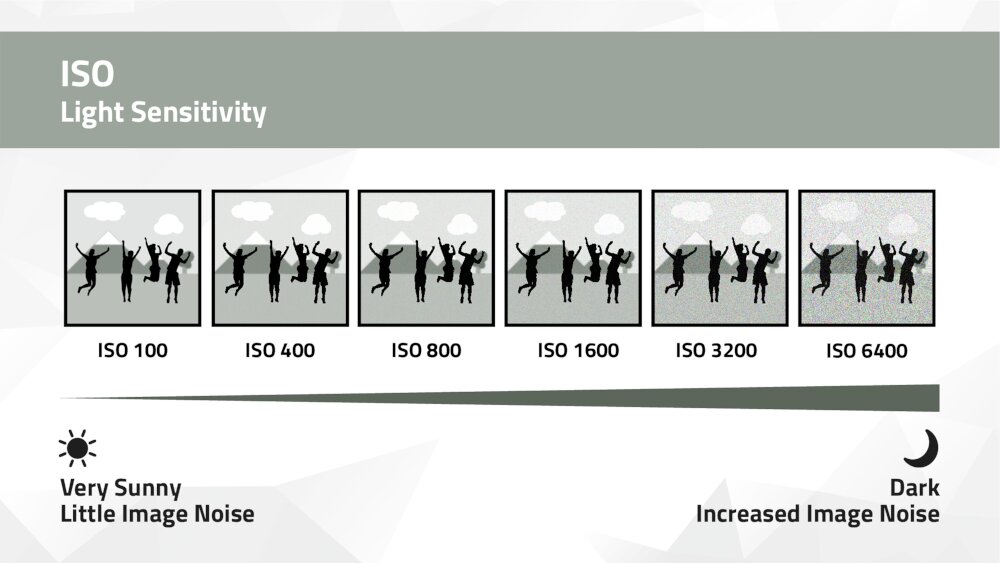
15. What does JPEG mean?
The JPEG file format is often used as the image file format for digital cameras. JPEG is a compression format that compresses the size of the file, but also somewhat degrades the image detail and colour fidelity.
Images with a .jpg file extension that are opened and saved multiple times can experience further degradations since the compression is intensified and image information is lost. There is no loss of information with the RAW format.
16. What does lens speed mean?
The lens speed is one of the three fundamental qualities of a lens and describes the maximum aperture ratio of a lens.
Notice
The smaller the minimum f-number, the faster the lens is.
Lenses with an especially high lens speed are called “fast lenses” since the higher quantity of light that hits the sensor allows for the exposure time to be shortened. The maximum aperture of most camera lenses today is between 1:1.4 and 1:5.6. Ultrafast lenses with a value between 1:1.0 and 1:0.7 are only used for special applications in science.
Besides the advantage of a shorter exposure time, less camera shake appears when freehand photographing with a fast lens. A brighter display image can be depicted and the autofocus can focus faster and more exact even in poor weather conditions. However, these lenses are not only larger and heavier, but they are also more expensive.
17. What is RAW format?
If, while photographing, the RAW format is used instead of the JPEG format, the image data from the sensor is saved without being processed and no data is lost. The larger amount of data and colour depth allows more in-depth image editing of the photos at a later point in time.
18. What is depth of field?
The area where a motif is in focus is called the depth of field. Depending on what is being photographed, much or little depth of field is required.
When photographing landscapes or architecture, usually the whole motif should be sharply depicted. In order to achieve this area-wide sharpness, the aperture should be closed as much as possible in order to give the image a better depth of field.
With other motifs such as portraits or close-ups in macrophotography, a wide-open aperture is used in order to keep the depth of field to a minimum. Limiting the area of sharpness makes the background appear blurry and makes the photographed motif appear that much more sharp in the foreground.
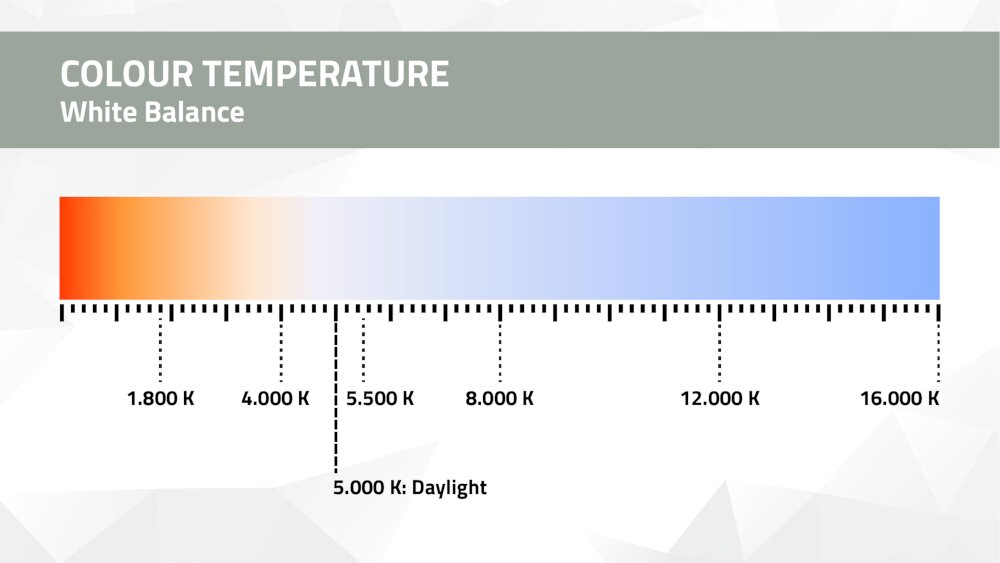
19. How does white balance work?
White balance adjusts the camera’s exposure colour to the colour temperature of the surrounding ambient light. This makes the colours appear more realistic. Without the use of white balance, which is automatically done by many digital cameras, the image may appear artificial.
20. What kinds of zoom are there?
A camera’s zoom enables you to enlarge or minimise a motif without having to change your own position. Here, a distinction is made between a digital zoom and an optical zoom.
A digital zoom only enlarges the image section, which can lead to lower image quality. Smartphones and compact cameras often only come equipped with a digital zoom.
In contrast, an optical zoom alters the actual focal length. When the lens of a zoom lens is placed further away from the sensor, the focal length becomes longer, which minimises the image section and zooms in on the motif. If a motif should be minimised, the converse occurs.
